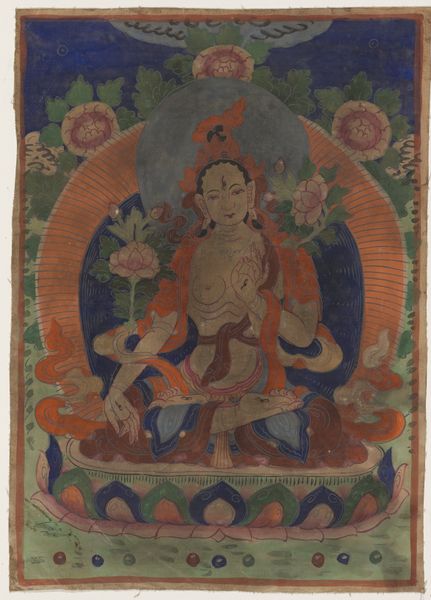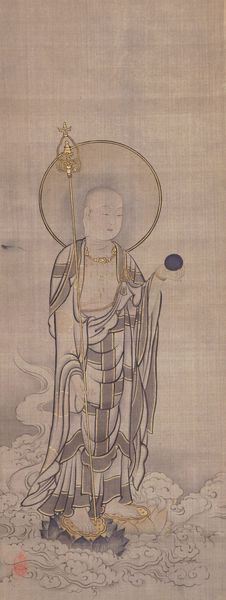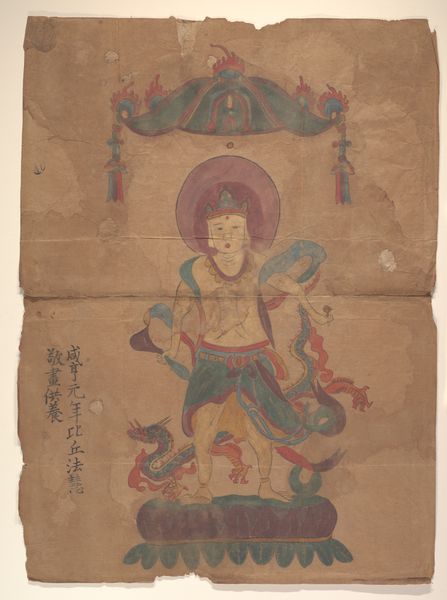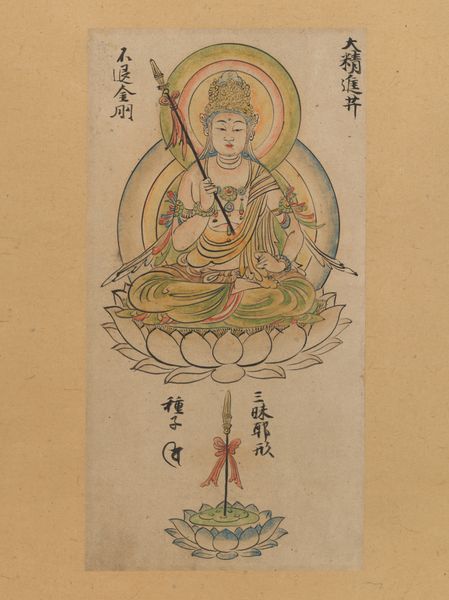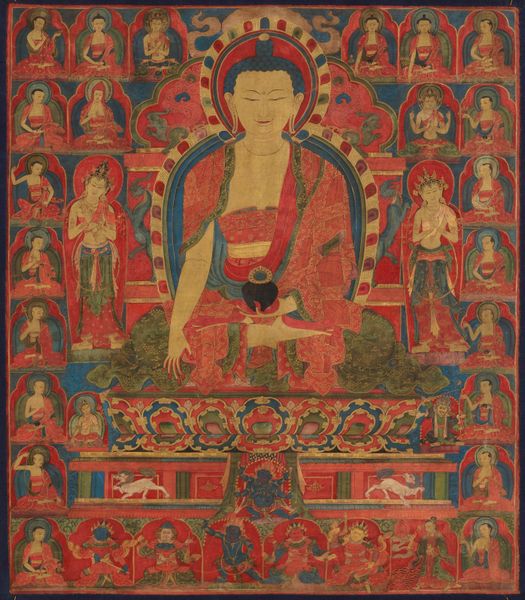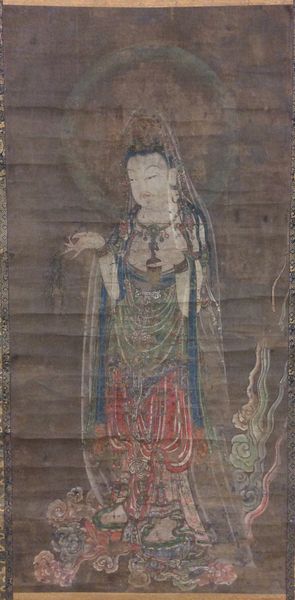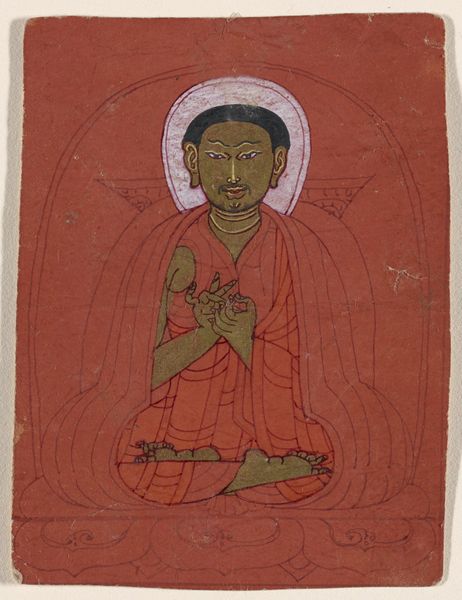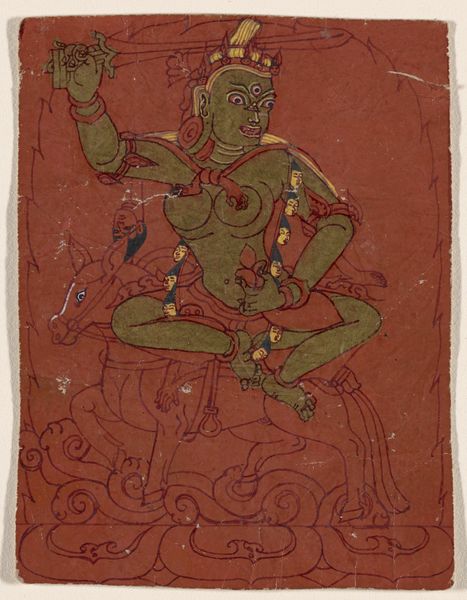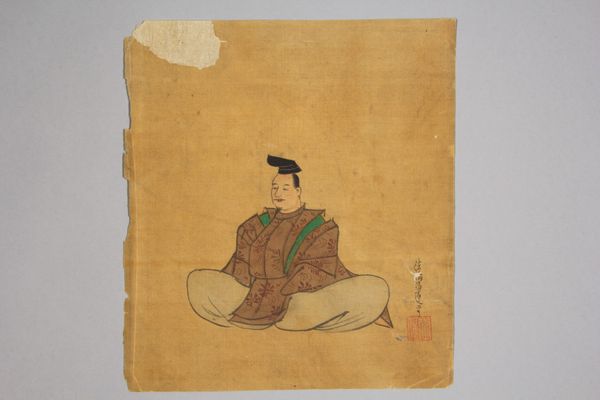
Buddhist Ritual Instruction Card (Tsakali) c. 13th century
0:00
0:00
drawing, ink
#
portrait
#
drawing
#
asian-art
#
ink
#
coloured pencil
#
portrait drawing
Dimensions: 3 3/4 x 3 3/16 in. (9.5 x 8.1 cm)
Copyright: Public Domain
Editor: So, this is a 13th-century 'Buddhist Ritual Instruction Card', also known as a Tsakali. It's an ink drawing, a portrait of a figure sitting on a lotus throne, in the Minneapolis Institute of Art collection. It feels very serene, but also a bit unfinished. What draws your eye in this piece? Curator: My focus is immediately pulled to the subject's gaze. Note how his eyes are not directed at us, but slightly off to the side. This evokes a sense of detachment, a common theme in Buddhist art where the practitioner is encouraged to look beyond the material world. The artist’s choices carry significant weight here; do you notice the symbolism in his hand gestures? Editor: It looks like he's holding something... a ritual object, maybe? Curator: Precisely. These are the gestures, or mudras, loaded with meaning. The positioning suggests he’s engaged in a specific meditation, a visualized offering. It's less about depiction and more about symbolic action. How do you interpret the impact of this stylized symbolism? Editor: It’s like the image is a set of instructions. The artist uses the gaze, posture, and the mudra to connect the viewer with a long ritual tradition, right? Curator: Exactly! It serves as both a reminder and a tool. These cards would have aided in the performance of complex rituals, triggering learned responses and connections to the wider Buddhist cosmology. The sketch-like nature only highlights the spiritual work required of the devotee. Editor: So the image itself is almost a symbolic key, opening a door to understanding and practice. I had initially read it as a simple drawing, but seeing the layers of cultural meaning behind it changes everything. Curator: It transforms our perspective entirely.
Comments
No comments
Be the first to comment and join the conversation on the ultimate creative platform.
